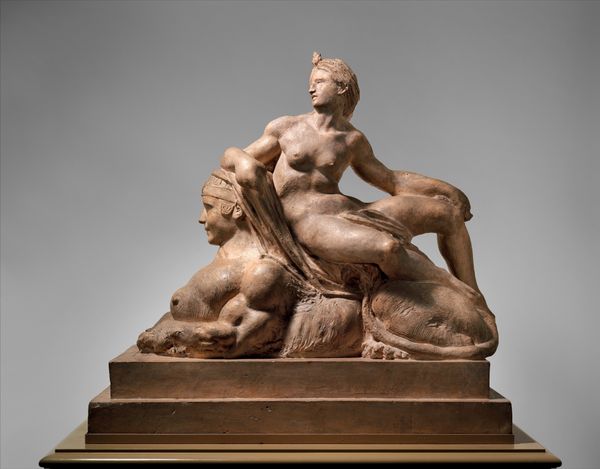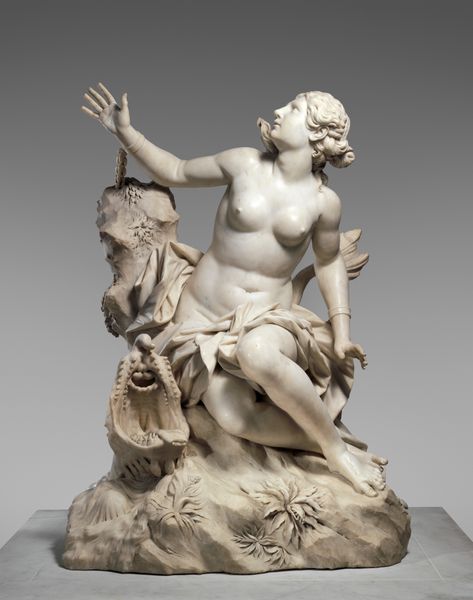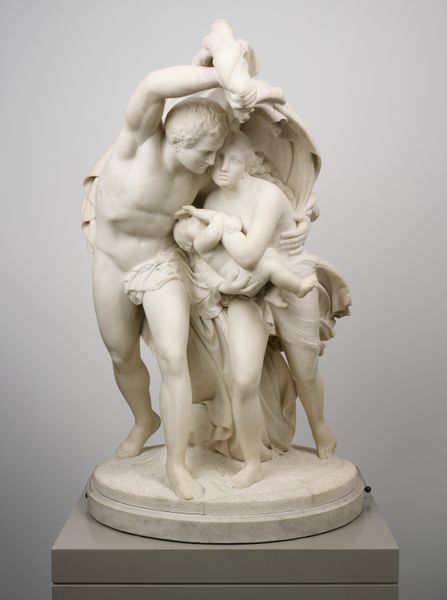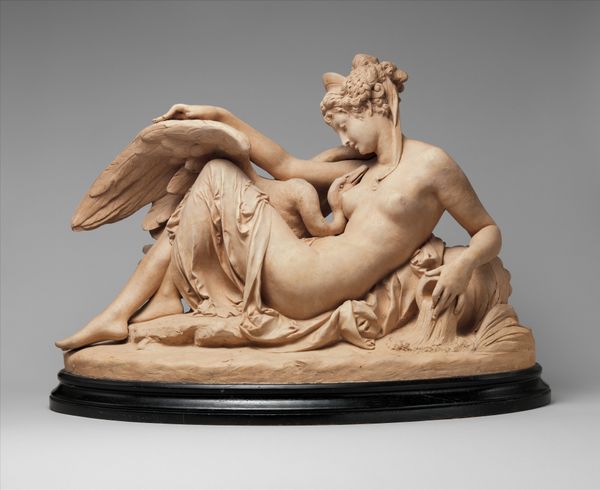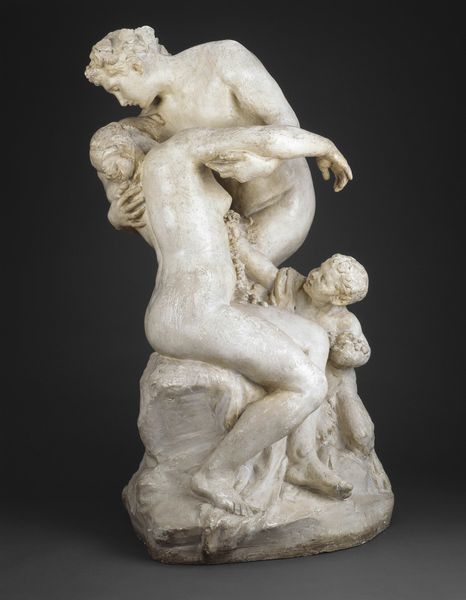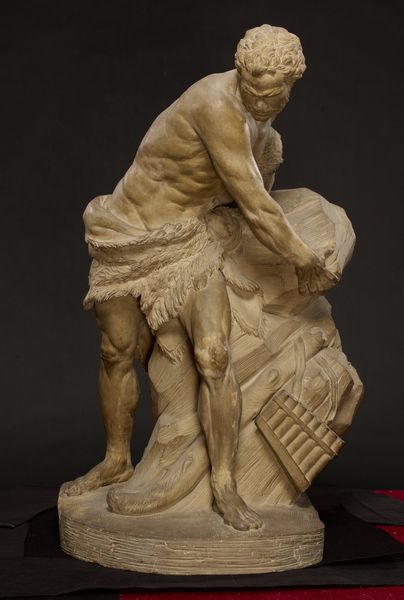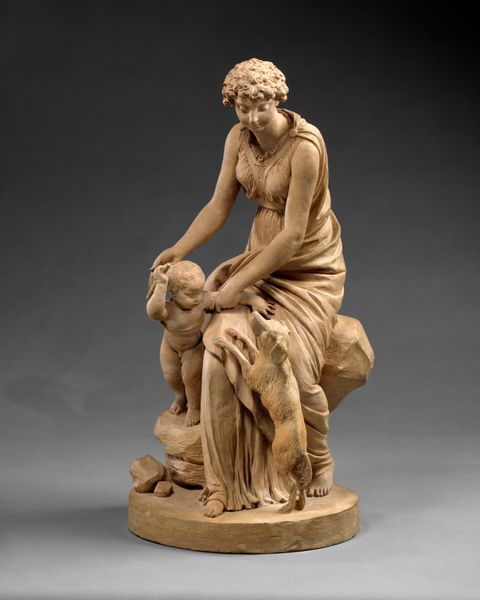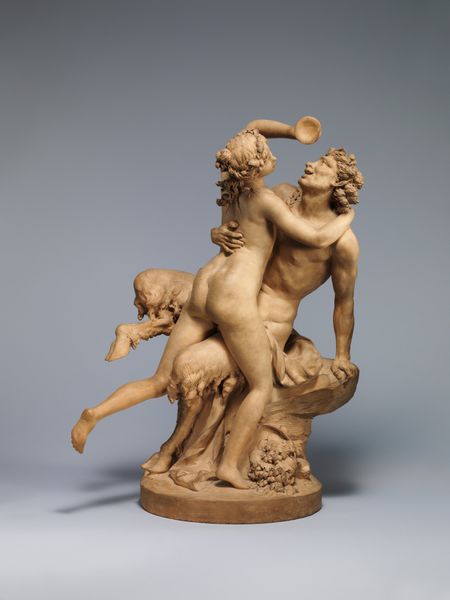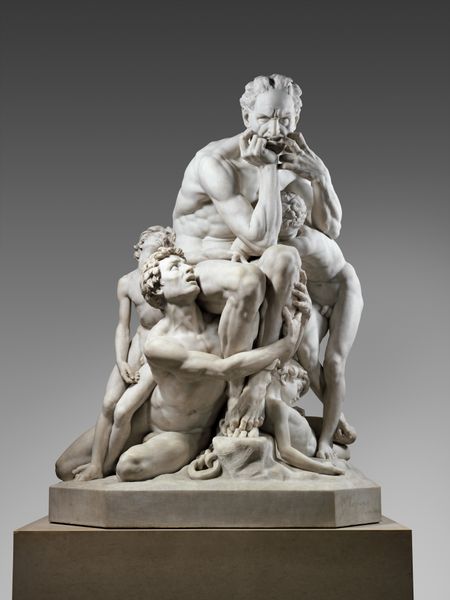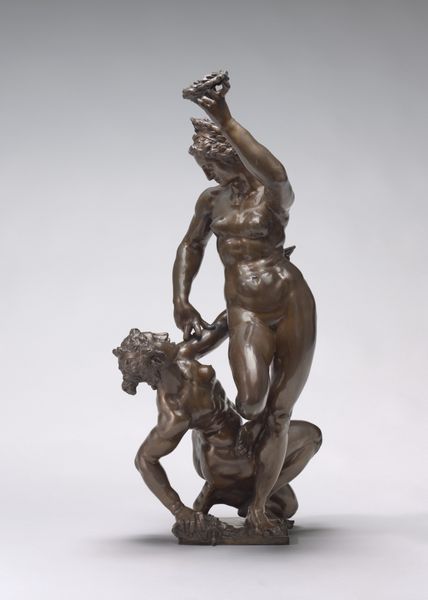
Dimensions: Overall (confirmed): 46 × 44 1/8 × 23 3/4 in. (116.8 × 112.1 × 60.3 cm)
Copyright: Public Domain
Auguste Préault created this terracotta sculpture of Jupiter and the Sphinx in 19th-century France, a period marked by significant social and political upheaval. Préault uses classical imagery, Jupiter, the king of the gods, and the mythical Sphinx, to explore themes of power, knowledge, and the relationship between the divine and the earthly. The choice of terracotta, a humble material, challenges the traditional association of sculpture with marble and bronze, reflecting a shift in artistic values toward more direct and expressive forms. The sculpture’s rough, unfinished texture and dynamic composition suggest a rejection of academic polish in favor of raw emotional intensity. This can be interpreted as a commentary on the rigid social structures of the time, with Préault using classical figures to question contemporary norms. Understanding Préault’s historical context, through his letters and exhibition reviews, allows us to appreciate how art served as a critical voice in a rapidly changing society.
Comments
No comments
Be the first to comment and join the conversation on the ultimate creative platform.
